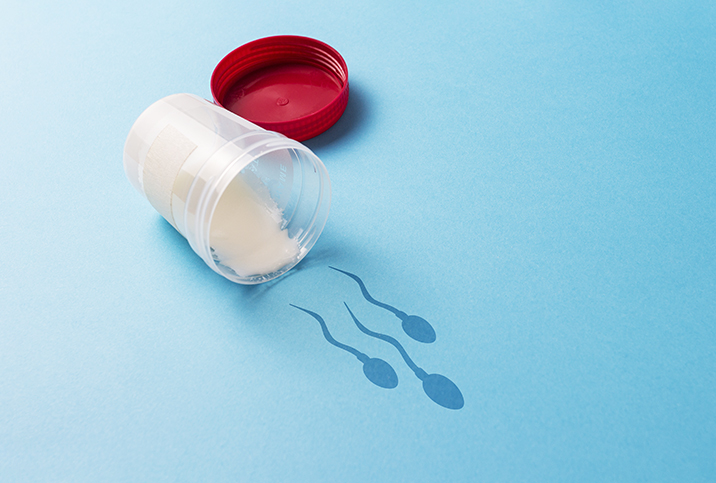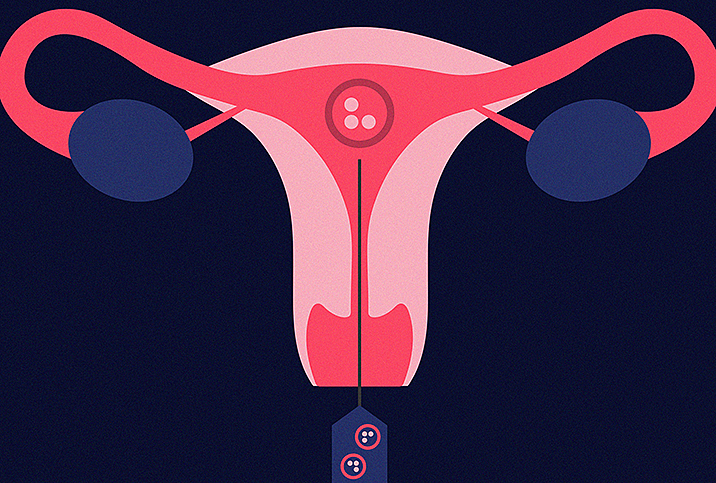So You Took an At-Home Fertility Test—Now What?

Last year, Casey and her fiance, John, made the difficult decision to delay their wedding when COVID-19 made it dangerous to gather with loved ones. But then another decision required attention, and this one didn't come with CDC guidelines: Should they also wait to have a baby?
Casey, 31, worried that a family history of early menopause could make waiting risky. Hoping for information to help guide their decision, she ordered an at-home test from Modern Fertility, just one among a growing list of convenient services—including Everlywell and LetsGetChecked—designed to measure hormones that play different roles in a woman's ability to conceive by way of a small blood sample. This is taken at home and returned by mail for analysis.
At-home fertility tests offer access to information that traditionally hasn't been available to women and couples outside of a doctor's office until they're struggling to conceive. But deciphering the results can also lead to unnecessary anxiety. Once you have this information, what do you do with it?
What do your results really mean?
Women are often made painfully aware of their biological clocks, the ticking of time towards an age at which it's difficult or impossible to get pregnant. But they're rarely told how that ticking works.
At-home fertility tests show you the gears of that clock—your hormones, which impact your current and future ability to conceive. For those who are flirting with an age at which fertility declines more rapidly—35 is an oft-mentioned marker, but each woman's timeline is different—these tests can offer empowering information for family planning. Via finger-prick tests, they're seemingly just as accurate in measuring hormones as blood samples taken by intravenous injection at a doctor's office, according to a study sponsored by Modern Fertility and published by the American College of Obstetricians and Gynecologists.
The hormones measured by at-home fertility tests include anti-mullerian hormone (AMH), estradiol (E2), follicle-stimulating hormone (FSH), luteinizing hormone (LH), prolactin (PRL), testosterone, thyroid-stimulating hormone (TSH) and free thyroxine (T4). Each of these plays a different role in conception. But the most consequential is AMH, which is reflective of the total number of eggs you have remaining. A low AMH level can indicate a diminished egg reserve and/or a higher risk of early menopause. E2 and FSH are also related to ovarian reserves.
But nurse and fertility coach Helena Tubridy, who runs a fertility program in Ireland, said it's important to note that AMH levels can vary from cycle to cycle, and they are only one factor in a complicated picture of fertility health. Hormonal birth control can also skew the results. These tests are like a selfie, she explained—just one snapshot in time.
A low egg count doesn't eliminate your ability to get pregnant, said Natalie Crawford, M.D., an OB-GYN and fertility physician based in Austin, Texas. But knowing that information allows you to adjust plans in case your window of fertility might be shorter than expected.
Talk to your doctor
Modern Fertility offers a call with a nurse to discuss your results, which Casey found comforting and informative. But following up with your doctor will allow you to lay the foundation for future testing and conversations, should they be necessary.
When Crawford sees a patient who's recently taken an at-home fertility test, she asks: How many kids do they want?
We want to be able to intervene with enough time to meet your goals, Crawford tells them.
She then correlates the results of hormone testing with an ultrasound and an antral follicle count, which measures the number of egg-containing follicles that are maturing in the ovaries. While AMH levels are a reflection of your future fertility, the follicle count measures your current ability to conceive, which might be healthy despite low AMH.
After a full health panel, your doctor can better advise you on the next steps, which might include starting a family sooner than later, freezing your eggs or simply continuing to monitor your health. For more specific guidance, Crawford said, you may want to see a fertility specialist in addition to your OB-GYN.
Look at the Bigger Picture
After receiving the results of her home test, which indicated low AMH levels, and talking with her doctor, Casey decided not to wait; she and John started trying and got pregnant right away.
But couples should remember that it's not just women's fertility that drops as we age, and that male infertility is under-examined and underdiagnosed, Tubridy said. If you're partnered with a male, he should consider being tested, too: At-home options for men include Dadi and Legacy.
Regardless of your relationship status or your goals, fertility health is a marker of overall health, and both Crawford and Tubridy believe this information is valuable. But so is getting enough sleep, eating healthy foods, exercising regularly and reducing stress, all of which can impact our body's ability to start a family someday. There are so many factors that impact this journey, and at-home fertility tests are just one way to get started.


















